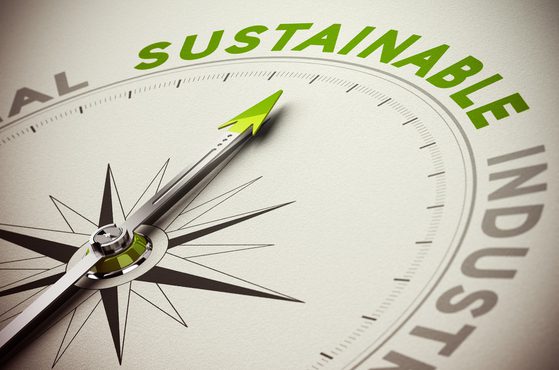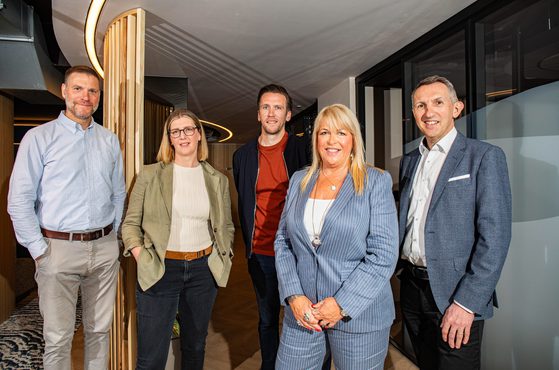Tech & IT contracts — how to future-proof for sustainability, AI & cybersecurity

Some tech businesses are exploring how their commercial frameworks could evolve through smarter, values-driven contracting.
Read more
We make the difference. Talk to us: 0333 004 4488 | hello@brabners.com
In this article, originally published in the Estate Gazette, Partner and recognised Better Business Pioner Simon Lewis outlines some of the practicalities of becoming B Corp-certified.
Certified B Corporations (B Corps for short) are “businesses that meet the highest standards of verified social and environmental performance, public transparency and legal accountability”.
Being recognised as a B Corp is considered the gold standard of sustainability accreditations and more businesses are becoming B Corps (including Brabners in September 2022).
The B Corp certification is administered by the not-for-profit B Lab. The certification process starts with the B Impact Assessment (BIA). The BIA is a self-assessment comprising more than 100 criteria (the precise number depends on the business applying) within the following five impact areas:
The BIA is free and there are no costs linked to the B Corp process until certification is granted — at which point an annual fee becomes payable. It should be viewed as a way to improve, rather than a test to be passed — so even if there is no intention of progressing a B Corp application, completing the BIA can be useful for firms looking to be more sustainable. The minimum score for certification is 80 (although the more points the better). Once the 80-point threshold is reached, the BIA can be submitted for evaluation and then verification. Evaluation looks at whether in principle a business can become a B Corp, verification dives into the detail of the BIA and checks that applicants can back up their claims.
The BIA is wide-ranging, and it can be tempting to treat it as a check-box exercise (and to some extent, it can be), but the most important requirement for a successful B Corp application is for an organisation to have the right mindset and the support of key stakeholders. It is likely that areas for improvement will be identified by the BIA and — if the leadership team is not engaged with the project — it can lead to unnecessary delay.
Once a business becomes a B Corp, it is expected to continually improve its sustainability credentials and must publish an annual progress report. B Corps also have to recertify every three years and the aim is to increase the number of points with each recertification (although the 80-point threshold remains the same).
A core requirement is that the governance document for a company (the articles of association in the case of limited companies) must include a requirement for consideration of all stakeholders in its decision-making process and adopt a triple bottom line of people, planet and profit.
Note that it is not a requirement to sacrifice profit (nor to have a specified board composition), just to consider all stakeholders. B Lab provides sample wording that can be bolted on to existing articles, but many companies use the B Corp certification process to have a fundamental review of the governance documents (including shareholders’ agreements).
Points are allocated for generous employee benefits such as enhanced maternity/paternity leave, profit shares and the real living wage. B Corps generally offer above the statutory minimum for all aspects of employment packages. There are also points on offer for more technical areas, such as having anti-bribery and whistleblowing policies. A comprehensive review of an applicant’s employee handbook and the policies therein is a must for any B Corp hopeful.
The BIA includes a lot of questions about the environmental impact of a business. Carbon emissions are an obvious area, but there are also questions about air/ water quality, recycling rates and waste generation. These can be quite technical areas and many businesses find it helpful to have an environmental consultant to help measure their environmental impact.
It is also important to have an environmental policy. The BIA is a useful resource in developing a policy as it flags a number of areas of best practice.
Often, a business’s property will play a key role in its environmental impact. Businesses should assess whether they are able to improve the environmental credentials of their properties. If properties are leasehold, this can be more difficult — but opening a dialogue with landlords can often lead to changes that will impact on a BIA score. Changes to utility suppliers, recycling facilities and even electric car charging points can all have an impact.
The BIA awards points for sustainable supply chains, so it is helpful to have data on suppliers. Points are awarded for buying local and for having purchasing policies that favour sustainable suppliers.
The BIA looks at the impact a business has on its community. This can include employer-supported volunteering as well as charitable contributions. B Corps tend to have strong links to local communities and a history of charitable giving. Some have their own charitable foundations. All these areas that can help with BIA points.
Finally, most B Corps will not go through the process without at least some external guidance. B Lab provides a lot of guidance but does not provide hands-on support. There are specialist B Corp consultants (called B Leaders) who can take businesses through the process, with a varying level of support and range of services. It is generally useful to have external support on recording and assessing environmental impact and changes to governance, while employment documents are best produced with the support of a lawyer.
Talk to us
If you’re looking to become a B Corp — or simply want to improve the sustainability of your business — we can help.
This article was originally published in the Estate Gazette (EG 2329).

Some tech businesses are exploring how their commercial frameworks could evolve through smarter, values-driven contracting.
Read more

We explore the economic case for regeneration and outline three key areas that can help to get deals done and accelerate progress.
Read more

We've completed a groundbreaking strategic investment by acquiring a stake in The Sustainability Academy.
Read more